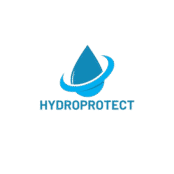Understanding Hotmelt Roof Waterproofing
Hotmelt roof waterproofing stands out as a revolutionary solution for modern-day builders, developers, and facility managers who are in pursuit of durable and effective insulation solutions. This innovative system is increasingly becoming a preferred choice, thanks to its reliable performance and versatility. Let’s delve deeper into what hotmelt technology entails and why it’s a superior alternative to traditional waterproofing methods.
What is Hotmelt Roof Waterproofing?
Hotmelt roof waterproofing is a robust, seamless, and fully bonded roofing system. It involves the application of a bitumen-based hot liquid on the roof, which cools and hardens to form a durable waterproof layer. The result is a strong bond to the structural deck, ensuring comprehensive protection against water ingress.
The Composition of Hotmelt Systems
- Bitumen Compound: A core component, this compound assures excellent adhesive properties and impermeability.
- Reinforcing Layer: Typically, a polyester fabric is embedded within the bitumen to enhance tensile strength and flexibility.
- Protective Layer: This could be a range of materials, providing a finishing touch that further shields against UV radiation, physical damage or enhances aesthetic appeal.
The Installation Process
The application of a hotmelt system is straightforward yet requires professional handling due to the high-temperature nature of the material. It demands the expertise of skilled installers who can ensure an optimal seal that accommodates building dynamics such as thermal movement.
Advantages of Hotmelt Roof Waterproofing
Hotmelt technology offers several substantial benefits that make it an attractive choice for roofing projects.
Durability and Longevity
- Seamless Application: Being seamless, the possibility of leak points is minimized, prolonging the lifespan of the roof.
- Temperature Resilience: With excellent performance in both high and low temperatures, these systems adapt to various climatic conditions.
Versatility
- Suitable for Complex Roof Designs: Hotmelt systems can be tailored to complex architectural designs, providing full coverage and flexibility.
- Compatibility with Green Roofs: This system is ideal for green roofs, which are becoming increasingly popular for their environmental benefits.
Cost-effectiveness
While the initial installation costs for hotmelt systems may be similar or slightly higher compared to other waterproofing systems, the longevity and minimal maintenance requirements result in significant long-term savings.
Environmental Benefits
- Recyclable Materials: Many hotmelt systems use recyclable materials, contributing to sustainable construction practices.
- Reduction in Heat Islands: The compatibility with green roofs fosters the reduction of urban heat islands, contributing to energy savings.
Comparing Hotmelt with Traditional Waterproofing Methods
When comparing hotmelt roof waterproofing to traditional methods, it is important to consider several factors.
Ease of Maintenance
- Simplified Repairs: The seamless nature of hotmelt systems minimizes the areas where water can penetrate, thereby reducing the need for frequent repairs.
- Inspection Efficiency: Routine inspections are typically faster, as the integrity of the system simplifies the identification of potential problem areas.
Performance Over Time
- Better Thermal Performance: Hotmelt systems often enhance the thermal capacity of roofs, helping maintain stable interior temperatures.
- Superior Weather Protection: Their resilience against harsh weather conditions ensures a longer-lasting solution compared to conventional alternatives.
Choosing the Right Hotmelt System for Your Needs
Deciding on the best hotmelt roof waterproofing solution involves considering factors pertinent to your specific project needs.
Project Specific Requirements
- Architectural Design: Evaluate the complexity of your roof design to determine the suitability of hotmelt systems.
- Environmental Goals: If promoting sustainability is a key objective, ensure that your hotmelt solution aligns with such goals.
Long-term Benefits
Investing in a hotmelt system might initially seem higher in cost but factoring in the reduced maintenance and extended lifespan reveals substantial benefits over time.
Summary
Hotmelt roof waterproofing presents a modern solution merging durability, versatility, and cost-effectiveness. Its seamless application minimizes leaks, ensuring longevity, and it offers exceptional weather resistance. While installation requires skilled professionals, the end result is a robust, adaptable system suitable for various projects, including complex designs and eco-friendly initiatives. By prioritizing project-specific needs and long-term gains, it is apparent why hotmelt technology remains a front-runner in roofing solutions.

